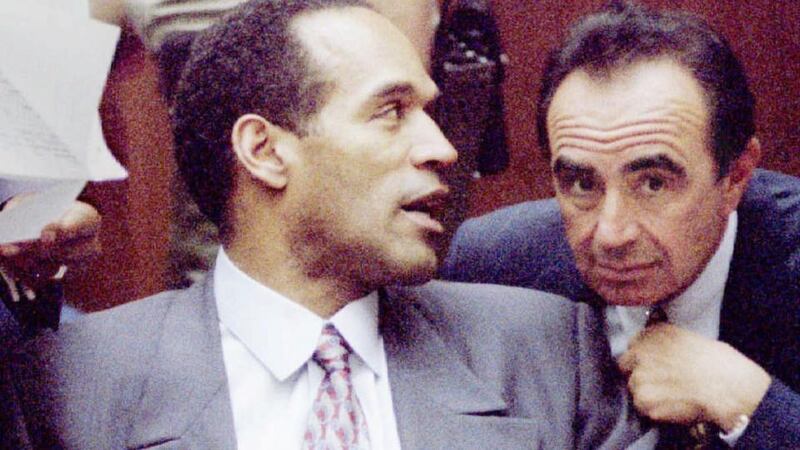Americans took a few hours away from the real-life soap opera of the Trump presidency this week and tuned in to another drama unfolding on the other side of the country in Nevada.
On Thursday OJ Simpson walked into the courtroom of the Lovelock correctional facility in the remote desert town to face a four-member panel of the Nevada Board of Parole Commissioners. Almost nine years after he was charged with kidnapping and armed robbery following a botched robbery in a Las Vegas hotel, one of the world’s most famous prisoners learned his fate.
The decision to grant parole had been expected by most legal analysts
Although sentenced to 33 years when he was convicted in 2008, he was eligible for parole on October 1st this year. By a unanimous decision, the panel granted the former football star and actor parole, citing his age, good behaviour while in prison and low risk of reoffending. The decision had been expected by most legal analysts.
The crime for which Simpson was incarcerated was an armed robbery during which he tried to take hundreds of items from a sports memorabilia dealer, but the incident with which he will forever be associated was the murder of his ex-wife, Nicole Brown Simpson, and her friend Ron Goldman at the former's home in Los Angeles in 1994.
The criminal case led to Simpson’s acquittal. A civil case brought by the Brown and Goldman families in 1997 found Simpson was responsible for both deaths.
The televised coverage of Simpson’s parole hearing revived memories of the so-called trial of the century, which captivated the US in the mid-1990s. Coinciding with the rise of cable news in the US, the spectacle of the OJ Simpson case began with an extraordinary two-hour police chase south of LA, relayed live on TV, and ended with an 11-month murder trial.
New drama
This week’s two-hour hearing was not without its own drama. Dressed in a light-blue denim shirt and looking relatively fresh-faced, though thin, the 70-year-old former football legend was interviewed by the panel.
“I always thought I’ve been pretty good with people, and have basically spent a conflict-free life. I’m not a guy who lived a criminal life,” he said, as he made his case for parole, a comment that was seized upon by commentators across the US given his previous convictions for domestic abuse of his ex-wife, whatever the findings of the criminal and civil trials.

The hearing had an added twist. While most parole hearings include a victim witness statement that typically urges the panel not to consider parole, in the Simpson case, the only surviving victim of the armed robbery, Bruce Fromong, testified in support of Simpson, claiming the former sports star had been misled about the memorabilia that was present in the room that day.
“OJ is my friend, always has been, and I hope will remain my friend,” he said.
LA riots
As it happens, Simpson’s parole hearing coincided with the release of several films and documentaries over the last year that have revisited the OJ Simpson trial.
Simpson's murder trial took place just two years after the LA riots, which erupted after the acquittal of four white police officers for attacking <a class="search" href='javascript:window.parent.actionEventData({$contentId:"7.1213540", $action:"view", $target:"work"})' polopoly:contentid="7.1213540" polopoly:searchtag="tag_person">Rodney King</a>
The award-winning shows The People vs OJ Simpson and OJ: Made in America have brought a fresh perspective on the Simpson case, freeing the trial from its showbiz context and repositioning it in its historical moment.
They act as a reminder that Simpson's trial took place just two years after the LA riots, which erupted after the acquittal of four white police officers for attacking Rodney King, and probe the complexities of a case that has often been reduced to a stock courtroom drama.
13th, a powerful documentary film that explores the 13th amendment to the constitution, which abolished slavery after the civil war, presents an outstanding insight into the race discrimination that has underpinned the US legal system since the end of slavery, contributing to a situation where one in three black males born today in the US is likely to go to prison.
The recent outrage at the killing of black individuals by white police officers and the rise of the Black Lives Matter movement are the most recent iterations of the tensions that have bubbled under the surface of American life for centuries.
Where the real-life OJ Simpson fits into the complex interplay of race, justice and incarceration that underpins American society is debatable. For his part, he has indicated his intention to move to Florida when he is released in October.
For many in America, Simpson’s release may bring to a close a long-running saga which has divided the country for decades.
















